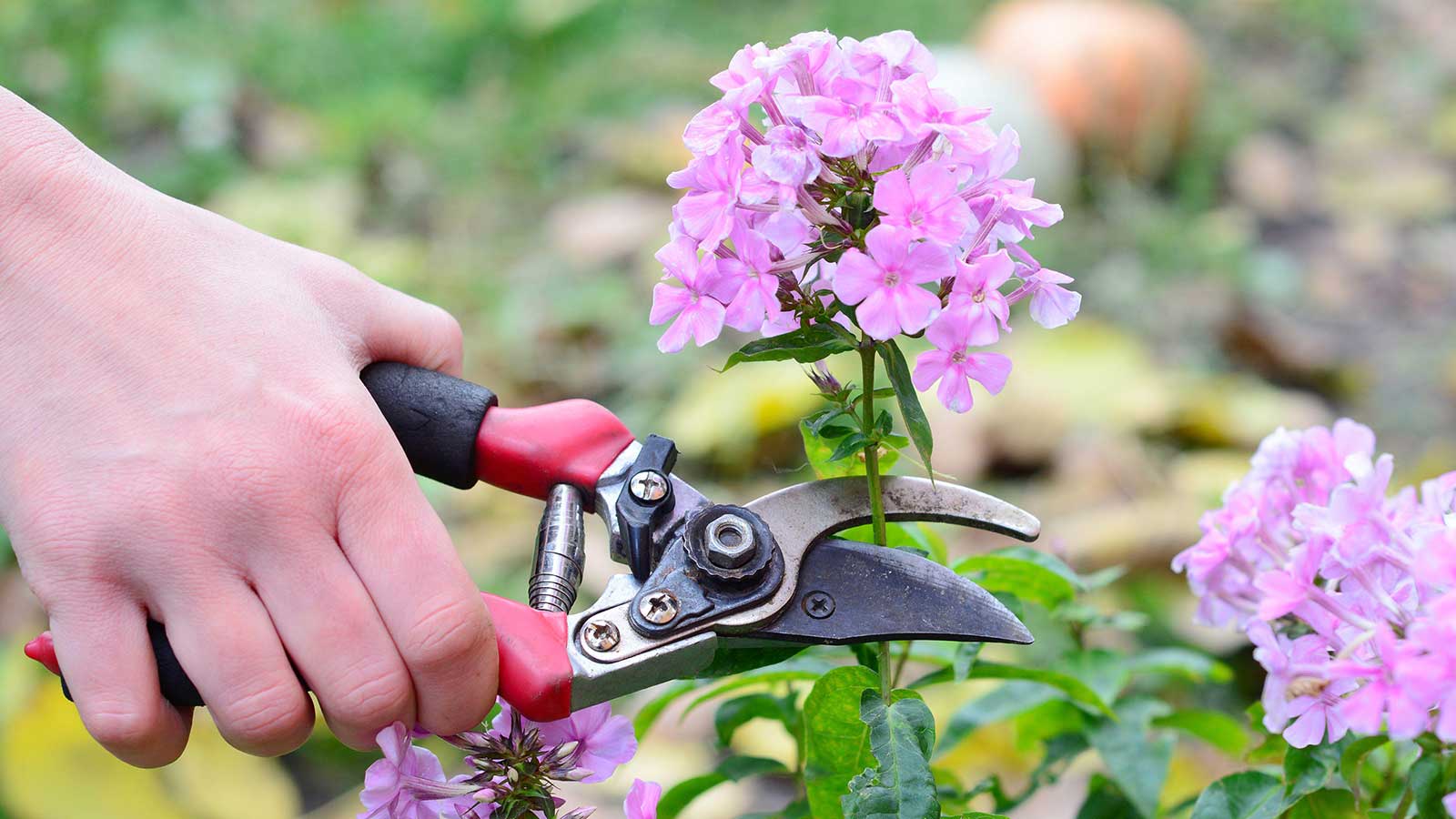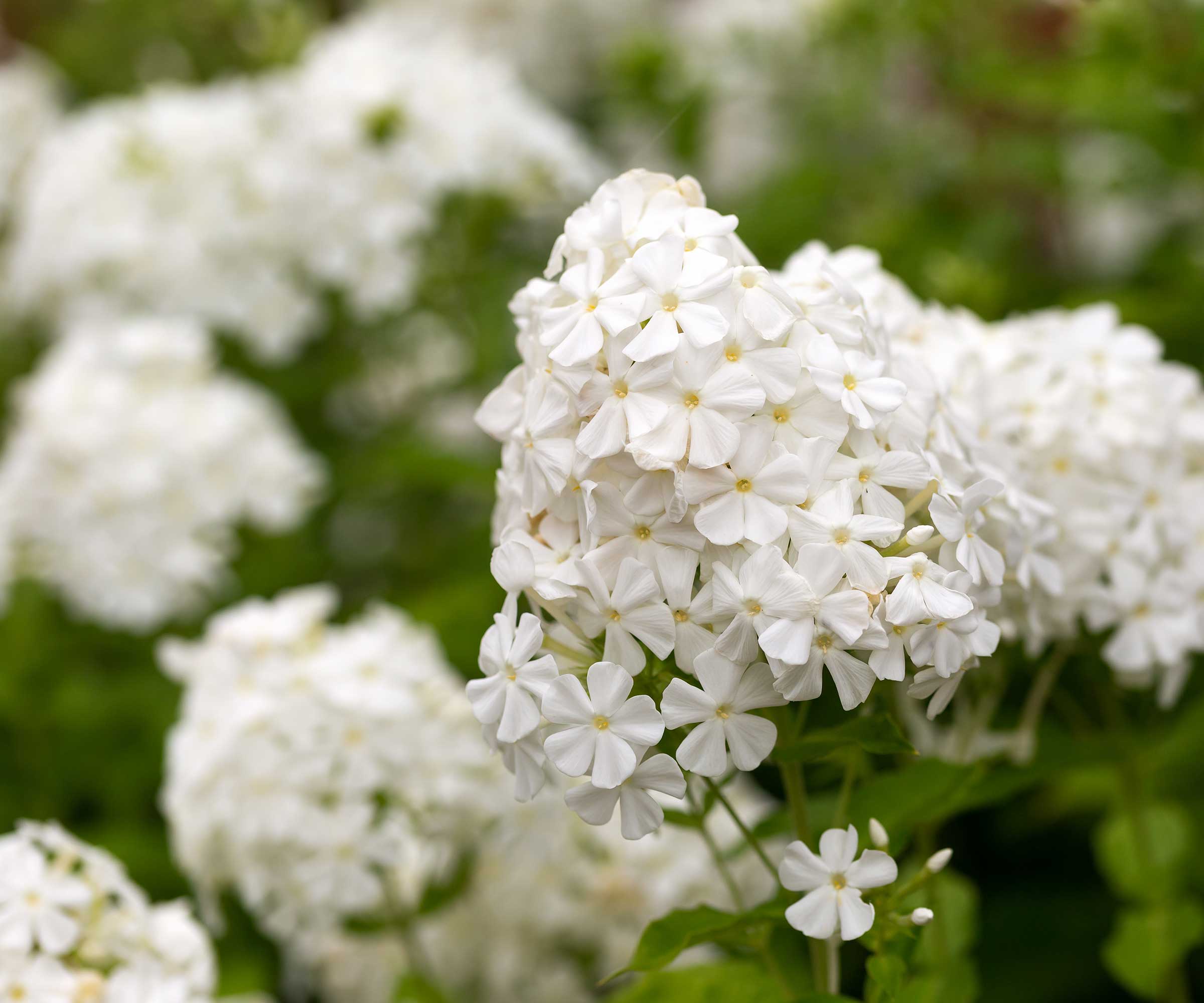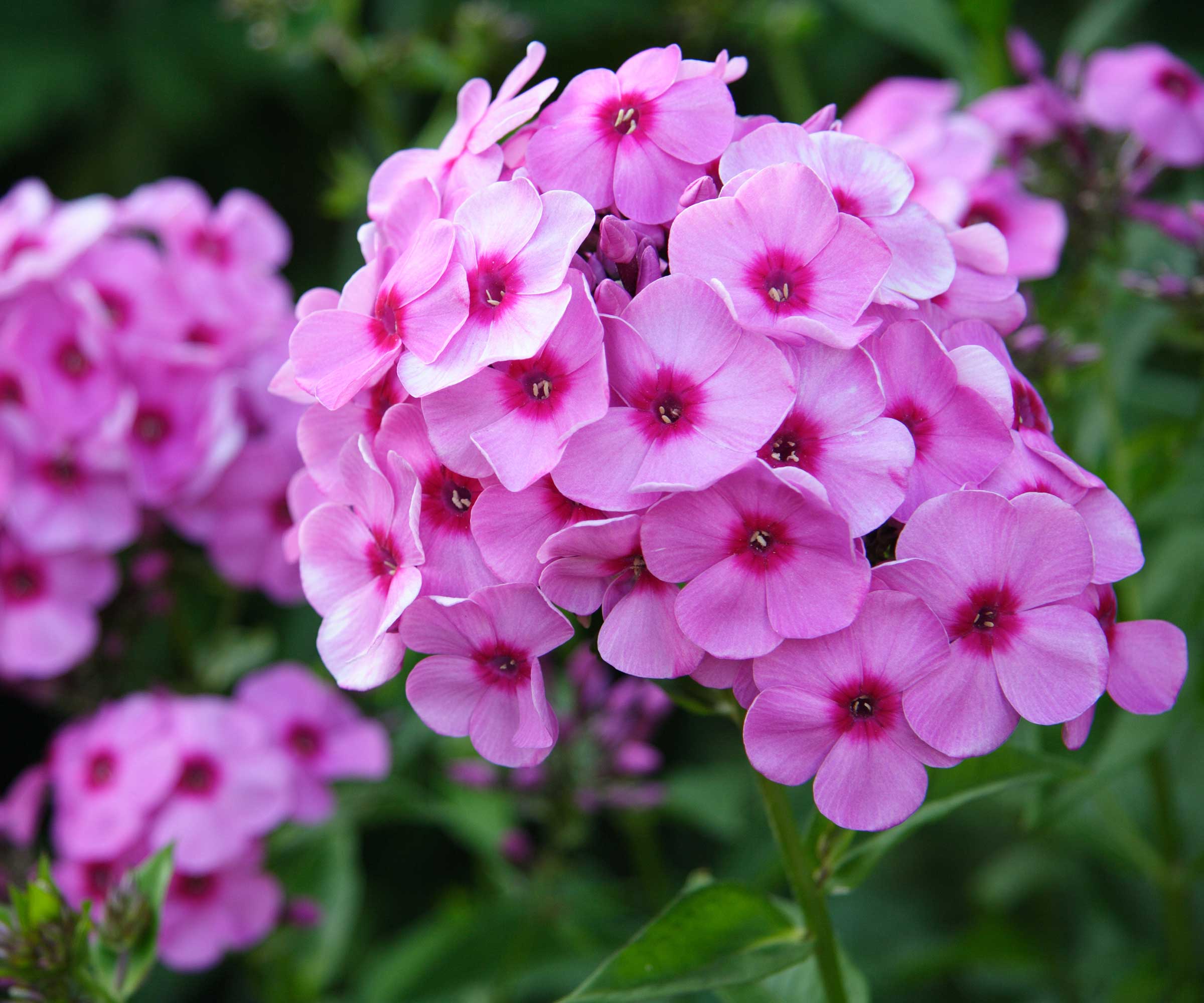How to deadhead phlox – for neater plants and an extra flush of flowers
These border plants benefit from a trim – here's how and when to do it successfully


Q: I have planted quite a few phlox plants in my border this year, and they are flowering beautifully. When the blooms fade, is it a good idea to deadhead them? And if so, what's the best approach to take?
A: Phlox is a stunning garden addition with its prolific, sweetly-scented blooms. However, these flowers look unsightly once they've passed their best, turning brown and withered on the plant. Snipping them off, therefore, improves the appearance of your floral display. But, that's not the only benefit of this gardening task.
Deadheading allows the plants to channel their energy into new growth, highlights Autumn Hilliard-Knapp of Perfect Plants Nursery. This means you may get to enjoy a second flush of flowers later on in the season, similarly to deadheading salvias or dahlias. It also prevents them from self-seeding uncontrollably all around your yard.
What's more, deadheading gives pollinators easier access to the remaining blooms, Autumn adds. And the process is simple, once you know how.

Autumn is a horticulture specialist and marketing professional at Perfect Plants Nursery. With four years of experience in the horticulture industry, she has developed a passion for helping people create beautiful indoor and outdoor spaces to enjoy. Her expertise in horticulture encompasses a broad range of activities, including plant care and selection, landscape design, and maintenance.

White phlox is an elegant addition to the garden
How to deadhead phlox
You can use a pair of snips or hand pruners to deadhead phlox, ensuring they are sharp and clean. Using dirty or blunt tools is a common deadheading mistake that's best avoided, as it could damage your plant.
Identify the clusters of faded flowers, then snip them off. Make your cuts at an angle, above a healthy leaf joint or bud, just below the spent bloom. If your plants have grown tall and wispy and are bending over, you can cut them back further – by about half of their size – adds gardening expert John Negus.
Side shoots will be encouraged to form, says John, and these can flower later on in the season.
'After deadheading, ensure proper watering and fertilization to encourage new blooms,' recommends David Cohen, the CEO of Badais International – a wholesale supplier of flowers and plants.
Design expertise in your inbox – from inspiring decorating ideas and beautiful celebrity homes to practical gardening advice and shopping round-ups.
John advises using a high-potash tomato feed every fortnight during the growing season. Try Miracle-Gro's tomato food from Amazon, which is well-rated amongst gardeners.
Fiskars Micro-Tip Pruning Snips | $13.10 from Amazon
These ergonomically-designed snips are ideal for making precise cuts when deadheading phlox, and are useful for maintaining other plants in your borders and pots, too.

John has been a garden journalist for over 50 years and regularly answers readers' questions in Amateur Gardening magazine. He has also written four books and has delivered many talks over the years on horticulture.
When to deadhead phlox
Just like when deadheading dianthus, coneflowers, or any other garden plant, deadheading phlox should be done as and when needed during the flowering season. So, ideally, check your plants weekly for dead blooms, and remove them as soon as possible.

Ensure you use clean pruners to deadhead plants
How to prune phlox to delay flowering
Before your phlox plants begin to flower, you can give them what's known in the UK as a 'Chelsea chop'. This is a technique that delays flowering by about a month, and can be useful if you wish to stagger the amount of blooms in your yard.
All you need to do is cut the stems back up to halfway, instructs the Royal Horticultural Society. This can be done in late May. Again, cut just above a growth node.

Pruning phlox early will delay its flowering time
How to cut back phlox for winter
In the fall, once the plant has produced its last flowers and the leaves have begun to die, this is the time to cut back phlox.
This is the best time to divide the plants, says John – a task that can be done every three or so years to prevent them from becoming congested. 'Reduce them to within 6in from the base and split clumps into chunky, well-rooted portions,' he instructs. These can then be replanted around your yard, in spots that have well-draining soil and a good amount of sunshine.
Alongside watering and fertilizing, deadheading is an important maintenance task for keeping a summer garden looking beautiful. True, it can be time-consuming – but keeping on top of it by checking plants frequently makes it a more manageable task. The rewards are worth the effort.

Holly started writing about gardening five years ago, and she is a regular contributor to Homes & Gardens. She has also written many gardening features for Woman & Home and Real Homes, too. She has previous experience as a professional gardener, where she helped to plant and maintain private gardens. Holly has also looked after allotment plots over the years and loves to grow her own flowers and veggies from seed. In her spare time, she enjoys visiting local gardens, botanical drawing, and tending to her ever-growing collection of houseplants.
